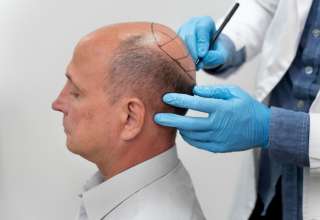The thought of a root canal can be terrifying – the anticipation of the pain, the multiple sessions at the dentist, and the huge cost is something to deter even the strongest heart.
Having said that, most of us don’t really know what root canal therapy actually is. Well, here is what you need to know about this procedure.
What is Root Canal Therapy?
Root canal therapy, also known as endodontic therapy, is a dental treatment that removes infections from inside teeth. Endodontic means inside the tooth.
A tooth is made up of a crown and roots. On the inside of the tooth is the canal. It contains the blood vessels, nerve tissue, and other cells that nourish the tooth, which together is called the pulp. When a canal is infected, hot and cold temperatures are felt as pain in the tooth.
Root canal therapy, as the name suggests, carries out the treatment in the pulp – or root canal – of the tooth. This treatment also protects the tooth from further infections. However, if you have a toothache instead and don’t know if you need a root canal, simply fix painful oral issues with Robert Rogers, DDS in concord.
Why is a Root Canal Treatment Necessary?
Endodontic therapy is carried out when you have an infection in the root canal. When you have a deep cavity, a loose filling, or even a cracked tooth, bacteria can enter the canal and cause an infection. This infection eventually destroys the pulp.
If you continue to neglect the infected tooth, the infection will spread to the bone and break it down. This will lead to the ligaments holding the tooth in place to loosening and the tooth finally becoming loose and falling off.
Root Canal Procedure
There are three steps to carrying out root canal therapy, and each step usually takes an entire session with the endodontist.
Cleaning the Root Canal
The first thing the endodontist will do is remove all the pulp inside the root canal. To do so, you will be placed under local anesthesia. Then, a small hole is drilled into the tooth and the diseased pulp is removed with tiny files.
Filling the Root Canal
Once the pulp is removed from the tooth, the endodontist then cleans, shapes and disinfects the hollowed-out tooth. This is done using irrigation solutions as well as the tiny files.
Once the root canal has been cleaned out completely so that there is no more infected tissue in it, a rubber-like material is used to fill in the empty canal. Once that is done, adhesive cement is used to seal off the canal.
Placing the Crown/Filling
The procedure removes all the live tissue that used to nourish the tooth and keep it strong. However, now, because all that pulp has been removed, the tooth is dead.
What this means is that it is now very fragile, since the only way the tooth will receive nourishment is from the ligament that attaches it to the bone. This is not adequate enough, and over a period of time, the tooth will become brittle and can break.
This is why a crown or filling is required to keep the tooth protected and whole.
Until the crown or filling placed on the tooth, it is not a good idea to bite or chew on that side of your mouth. Once the tooth is fully treated, you will be able to use that tooth-like before.
How Painful is Root Canal Therapy?
If you go to a reputed endodontist, the pain during the root canal therapy should be minimal. The first thing the dentist will do is numb the infected tooth as well as the surrounding gums and cheek with local anesthesia.
This way, you will really not feel a thing while the treatment is being carried out. It is expected that once the anesthesia wears off, there will be a certain amount of pain and tenderness.
But you don’t need to worry. The endodontist will prescribe you an OTC (over-the-counter) painkiller to help with that pain, which is also just temporary.
You may also be prescribed an antibiotic to help treat the infection or to prevent further infections after the root canal therapy is done.
How Expensive is a Root Canal?
A root canal is not too expensive, but the cost can vary widely. It is, however, cheaper than getting the tooth extracted and having an implant or bridge placed to replace the tooth.











